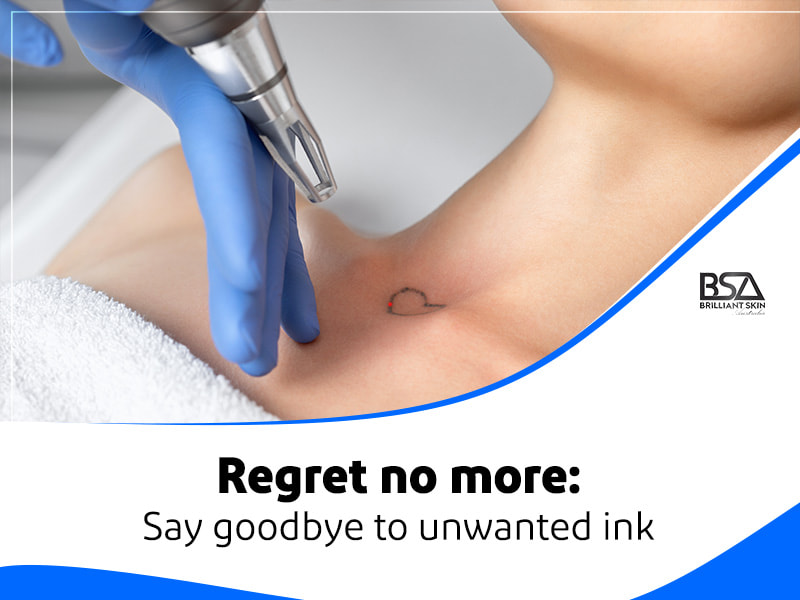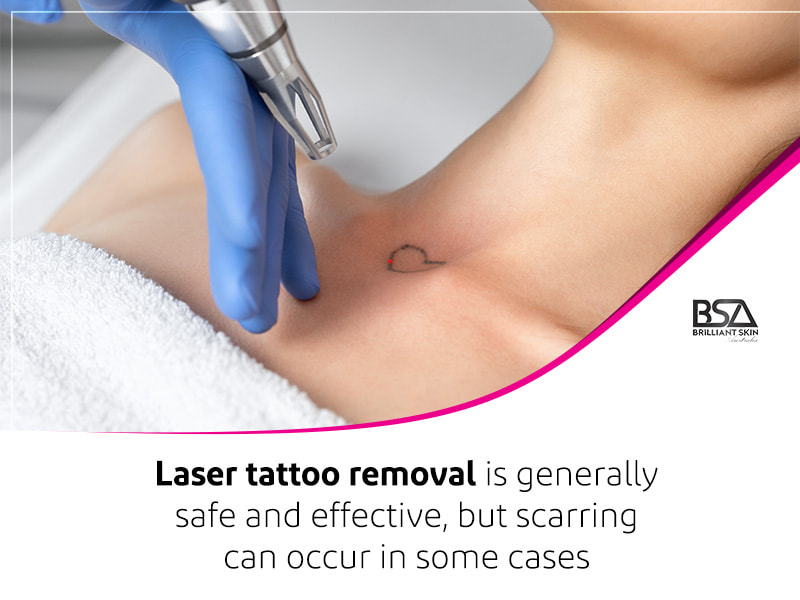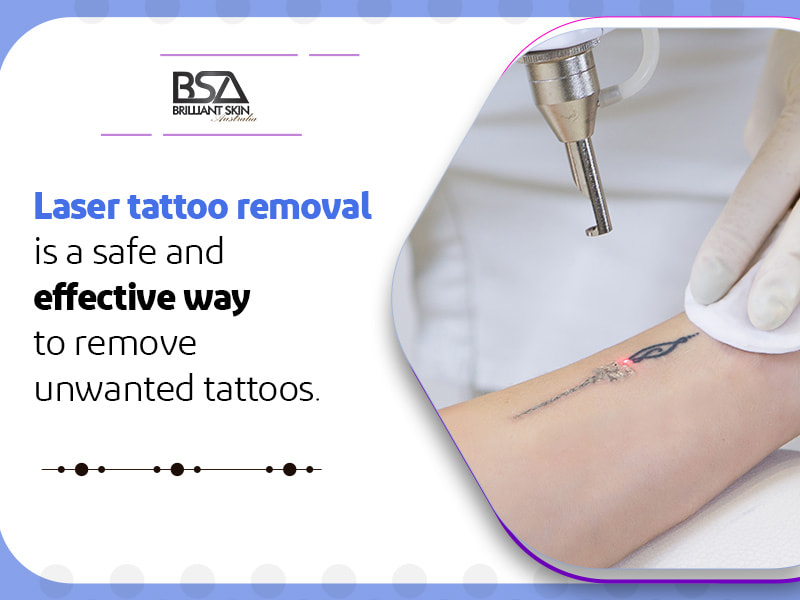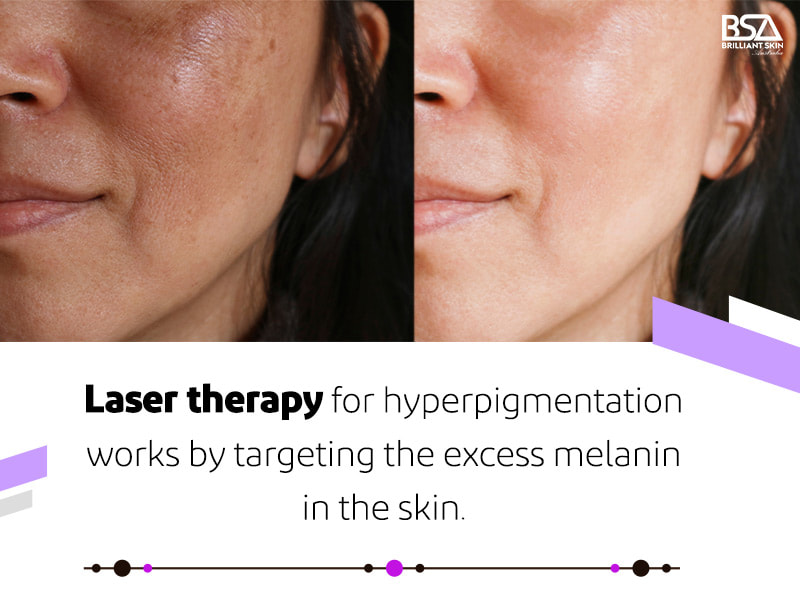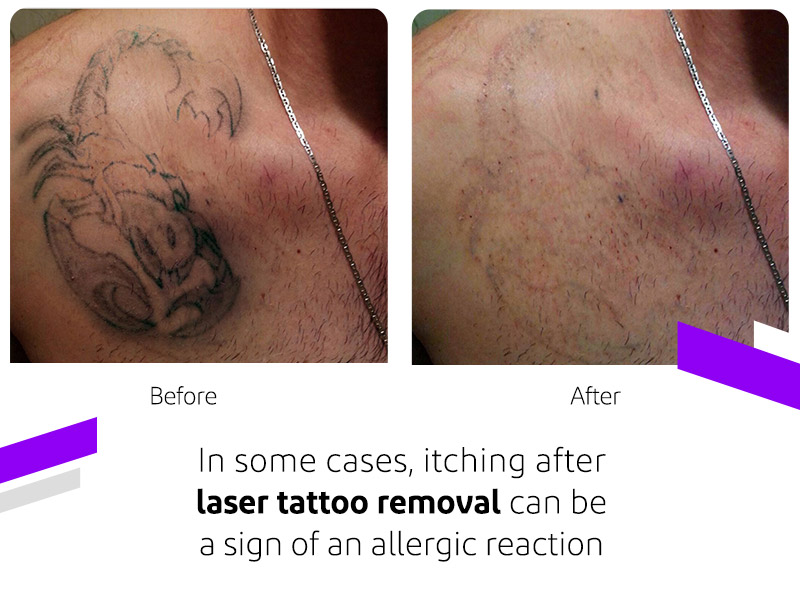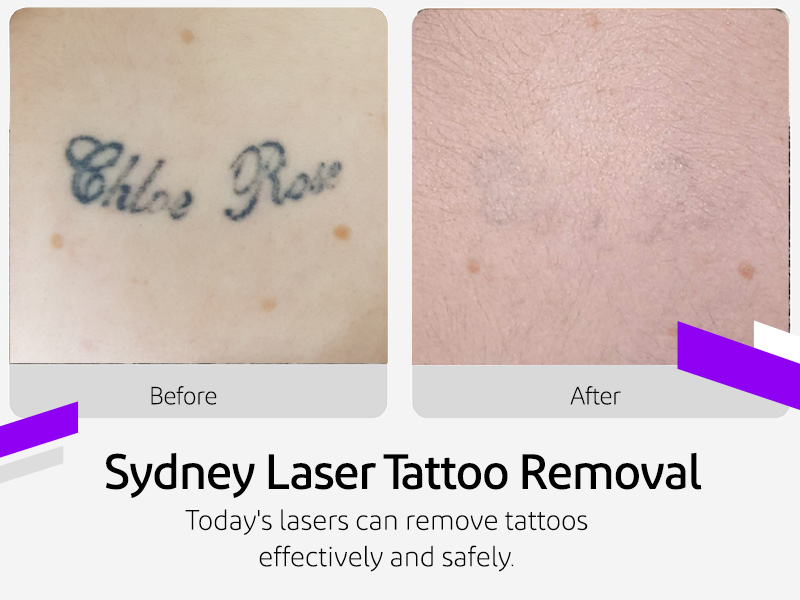Laser Tattoo Removal After 3 Sessions
- Updated April 26, 2023
- by Honey Seida
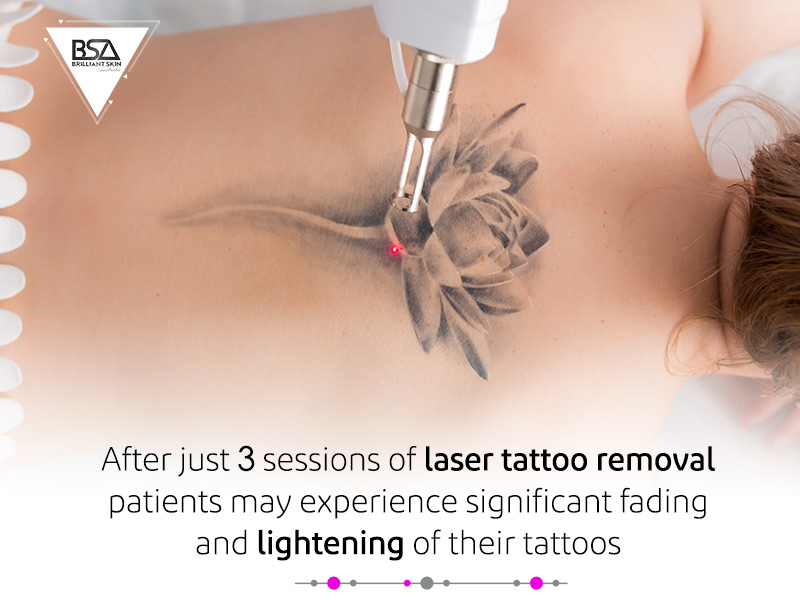
As someone who has had a tattoo that they regret, you might be interested in learning more about laser tattoo removal. It's a popular option for people who want to remove a tattoo that no longer reflects their style, beliefs, or personality.
Laser Tattoo Removal After 3 Sessions
Laser tattoo removal is a safe and effective way to get rid of unwanted tattoos, and it's available at many clinics and med-spas throughout the country. In this article, I'll share everything you need to know about laser tattoo removal after 3 sessions, including how it works, what to expect, and the benefits and risks of the procedure.
Introduction to Laser Tattoo Removal
Laser tattoo removal is a cosmetic procedure that uses lasers to remove unwanted tattoos. It works by breaking up the ink particles in the skin, which are then absorbed by the body's immune system and eliminated naturally.
The laser targets the pigment in the tattoo and breaks it down into smaller particles, which are then removed by the body. There are different types of lasers used for tattoo removal, and they vary in wavelength and strength depending on the color and depth of the tattoo.
Laser tattoo removal is a safe and effective way to remove tattoos, but it's not a quick fix. It requires multiple sessions over several months to achieve the desired results.
The number of sessions required depends on several factors, including the size, color, and location of the tattoo, as well as the patient's skin type and overall health. In general, larger, and more complex tattoos require more sessions than smaller and simpler ones.
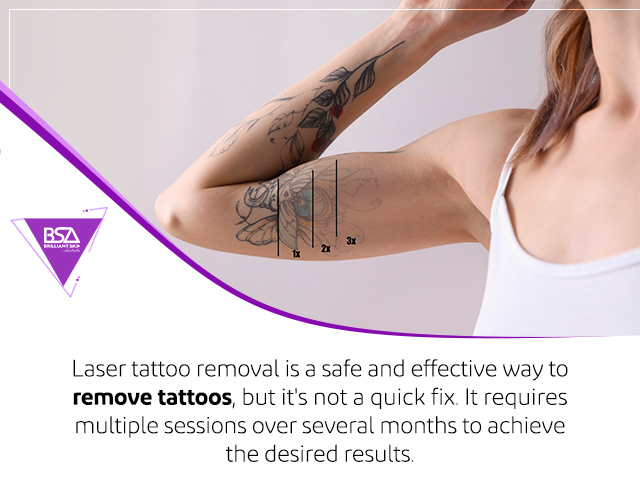
How Does Laser Tattoo Removal Work?
Laser tattoo removal works by targeting the ink particles in the skin with a high-intensity laser beam. The laser heats up and breaks down the ink particles into smaller fragments, which are then absorbed by the body's immune system and eliminated naturally over time. The laser beam is guided over the tattooed area by a handheld device, and the procedure is performed by a trained and licensed practitioner.
The laser used for tattoo removal emits light in specific wavelengths, which are absorbed by the ink particles in the skin. Different colors of ink require different wavelengths of light to be effectively targeted. Black ink is the easiest to remove, while other colors like green, blue, and yellow are more difficult. The depth of the tattoo also plays a role in the number of sessions required for removal.
What to Expect During Laser Tattoo Removal?
Before the procedure, the practitioner will clean the tattooed area and apply a numbing cream to minimize discomfort. The patient will wear protective eyewear to shield their eyes from the laser beam. During the procedure, the laser is guided over the tattooed area, and the patient may feel a slight burning or stinging sensation. The procedure can take anywhere from a few minutes to an hour, depending on the size and complexity of the tattoo.
After the procedure, the patient may experience redness, swelling, and blistering in the treated area. These side effects are temporary and will subside within a few days. The patient will be given instructions on how to care for the treated area and will be advised to avoid exposure to the sun and to wear sunscreen to protect the skin.
How Many Sessions Does It Take to Remove a Tattoo?
The number of sessions required for tattoo removal depends on several factors, including the size, color, and location of the tattoo, as well as the patient's skin type and overall health. In general, it takes multiple sessions over several months to achieve complete removal of a tattoo. Most patients require 5-10 sessions for complete removal, but some tattoos may require more.
The sessions are typically spaced 4-6 weeks apart to allow the treated area to heal and the body's immune system to eliminate the ink particles. The practitioner may adjust the number and frequency of sessions based on the patient's response to treatment and the progress of tattoo removal.
Benefits of Laser Tattoo Removal After 3 Sessions
Laser tattoo removal after 3 sessions can offer several benefits to patients who want to remove unwanted tattoos. After just 3 sessions, patients may experience significant fading and lightening of their tattoos. This can make it easier to cover up the tattoo with makeup or clothing, or to proceed with further removal sessions.
Laser tattoo removal after 3 sessions can also save time and money for patients who want to remove their tattoos quickly and efficiently. While complete removal may require more sessions, significant fading can be achieved in just a few sessions, which can help patients achieve their desired results sooner.
Laser Tattoo Removal After Three Sessions - Real-Life Examples
Many patients have successfully removed their tattoos after just 3 sessions of laser tattoo removal. Real-life examples include patients who have tattoos removed from their arms, legs, back, and other areas of the body. After just 3 sessions, they have seen significant fading and lightening of their tattoos, which has made it easier to cover up or proceed with further removal sessions.
One patient, Sarah, had a large tattoo on her back that she regretted. After just 3 sessions of laser tattoo removal, she saw a significant reduction in the visibility of the tattoo. She was able to cover up the remaining tattoo with makeup and clothing, and she plans to proceed with further removal sessions to completely eliminate the tattoo.
Another patient, John, had a small tattoo on his wrist that he no longer wanted. After just 3 sessions of laser tattoo removal, the tattoo was almost completely faded. He was able to proceed with his daily activities without feeling self-conscious about the tattoo, and he plans to have one more removal session to ensure complete elimination.
Preparing for Your Laser Tattoo Removal Sessions
Before your laser tattoo removal sessions, it's important to prepare your skin and your body for the procedure. Here are some tips to help you prepare:
- Avoid sun exposure and tanning beds for at least 2 weeks before the procedure.
- Avoid using products that can irritate the skin, such as retinoids, alpha-hydroxy acids, and benzoyl peroxide.
- Stay hydrated and eat a healthy diet to promote skin health and healing.
- Wear loose, comfortable clothing to the appointment, as tight clothing can irritate the treated area.
- Avoid alcohol and smoking, as they can negatively affect the healing process.
Taking Care of Your Skin After Laser Tattoo Removal
After your laser tattoo removal sessions, it's important to take care of your skin to promote healing and prevent infection. Here are some tips to help you care for your skin:
- Apply a soothing ointment or cream to the treated area to promote healing.
- Avoid direct sun exposure and wear sunscreen to protect the treated area from UV rays.
- Avoid picking or scratching the treated area, as this can result in scarring and infection.
- Avoid strenuous exercise and activities that can cause sweating for at least 24 hours after the procedure.
- Follow the practitioner's instructions on how to care for the treated area, including when to schedule follow-up appointments.
Read more: Laser Tattoo Removal Before and After
Risks and Side Effects of Laser Tattoo Removal
Like any cosmetic procedure, laser tattoo removal carries some risks and potential side effects. These may include:
- Redness, swelling, and blistering in the treated area.
- Scarring or changes in skin texture.
- Skin discoloration or hyperpigmentation.
- Infection or allergic reaction to the numbing cream or other products used during the procedure.
- Pain, discomfort, or bleeding during the procedure.
It's important to discuss the potential risks and side effects of laser tattoo removal with your practitioner before the procedure. They can help you understand the risks and provide guidance on how to minimize them.
Final Word - Is Laser Tattoo Removal After 3 Sessions Right for You?
Laser tattoo removal after 3 sessions can be a safe and effective way to remove unwanted tattoos. It offers several benefits, including significant fading and lightening of tattoos, as well as saving time and money for patients who want to achieve their desired results quickly.
Before deciding on laser tattoo removal, it's important to consider the potential risks and side effects, as well as the number of sessions required for complete removal. It's also important to choose a licensed and experienced practitioner who can guide you through the process and provide personalized care and support.
If you're considering laser tattoo removal after 3 sessions, talk to your practitioner about your goals, concerns, and expectations. They can help you determine if laser tattoo removal is right for you and provide guidance on how to achieve the best possible results.

